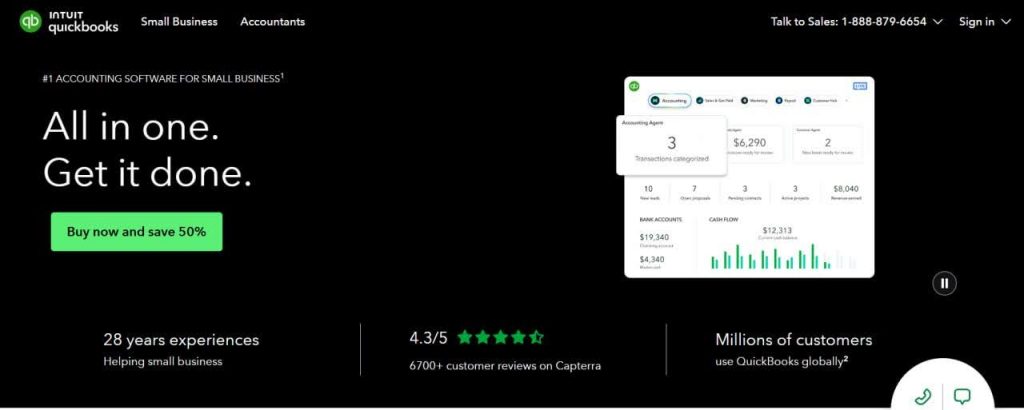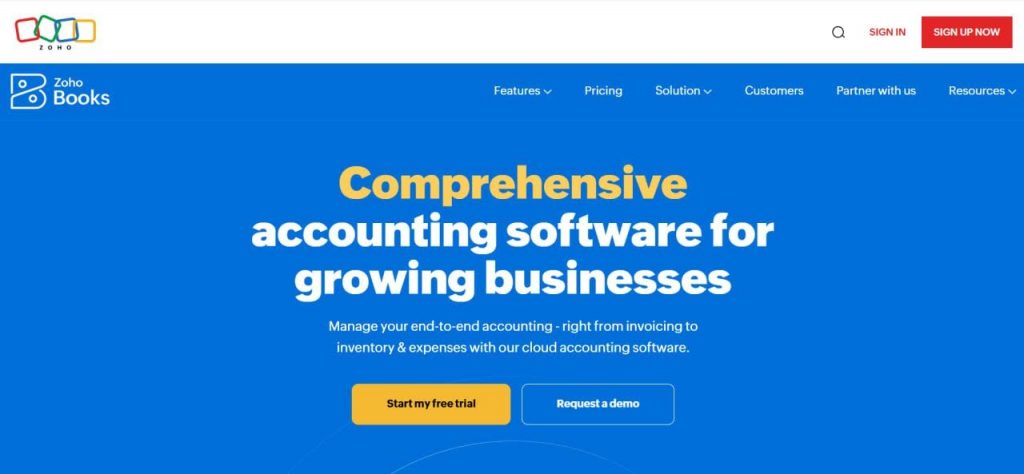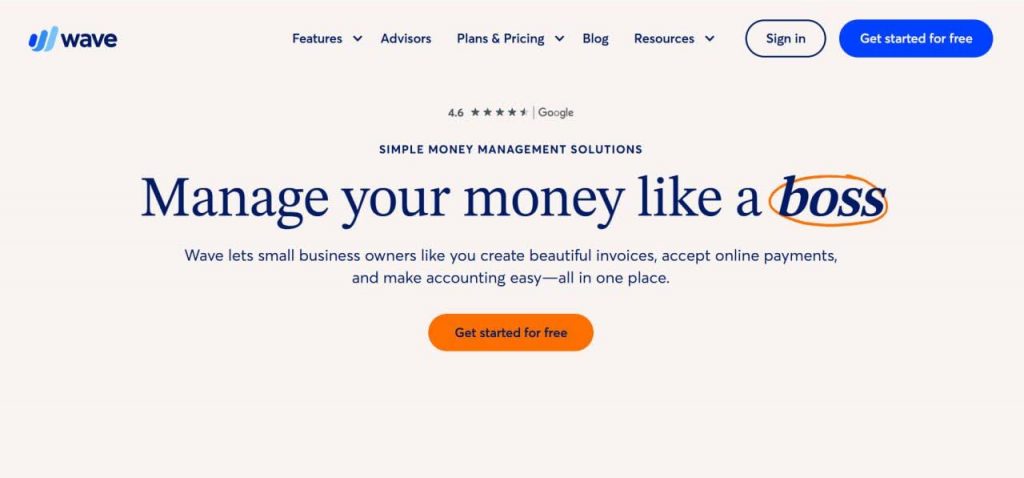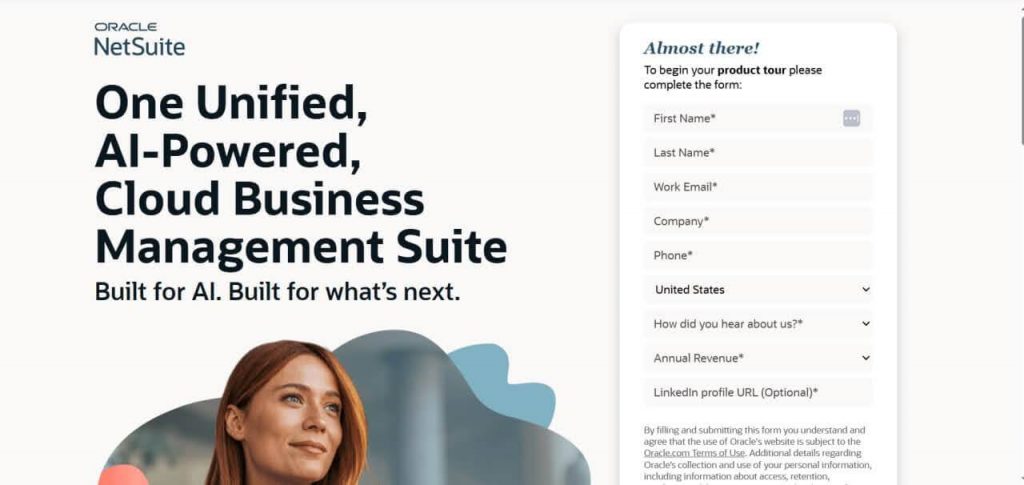Running a fitness business means managing far more than classes and member experience. Behind every workout is a mix of recurring memberships, one-off passes, retail sales, and online programs, each flowing through different systems. With the global fitness market expected to reach $202B by 2030, even small studios quickly find their financial data scattered: one platform shows gross sales, another shows net payouts.
As soon as revenue comes from both in-person and digital services, it becomes harder to see what was earned, what was refunded, and what’s still owed. Clean, consistent accounting becomes important for any studio or gym that wants to stay steady while scaling.
In this article, we’ll look at which accounting tools work best for fitness businesses and how the right automation keeps financial data accurate, no matter how many platforms you use.
TL;DR
- Fitness businesses rely on multiple systems like Stripe, PayPal, and Shopify, which makes revenue tracking fragmented and inconsistent.
- Modern tools like QuickBooks Online, Xero, NetSuite, and Sage Intacct offer solid financial structure, but they fall short because they don’t automatically pull full, detailed transaction data from every platform.
- Synder solves this by connecting all sales channels and payment platforms to your accounting system and syncing every sale, fee, refund, and tax with complete accuracy.
- With clean data and fast reconciliation, fitness businesses spend less time fixing spreadsheets and more time growing.
What makes accounting for fitness businesses unique
Fitness businesses don’t follow a simple “service in, payment out” model. Their revenue comes from different sources, each with its own timing, tax rules, and accounting behavior, and that’s what makes their financial management more complex than it looks.
Key complexities in fitness accounting:
- Recurring revenue that constantly changes – memberships renew, freeze, upgrade, fail, or get refunded, creating ongoing adjustments and deferred revenue tracking.
- Multiple sales channels with different payout behaviors – Stripe, Shopify, PayPal, and POS systems all handle fees and deposits differently, leading to mismatched numbers during reconciliation.
- High-volume micro-transactions – class packs, drop-ins, late-cancel fees, and add-ons create large volumes of small, hard-to-manage entries.
- Tax rules that vary by product and location – memberships, merchandise, and digital programs may each follow different tax treatments across states.
- Revenue-tied payroll and commissions – instructor compensation often depends on accurate session, attendance, or package data.
These unique challenges can be handled with accounting software like QuickBooks Online or Xero, which provide the structure and reporting fitness businesses need. But because these tools don’t automatically pull detailed data from every sales or payment source, an automation layer like Synder is key.
Synder connects with 30+ platforms, including Stripe, Shopify, PayPal, and Square, and brings in accurate sales, fees, taxes, and payouts, standardizing everything before it reaches your accounting system. This makes reconciliation faster and financial reporting far more reliable.
Top accounting software options for small to medium-sized fitness businesses
The right accounting system depends on your size and setup: whether you’re a boutique studio, a multi-location gym, an online coaching business, or a hybrid of all three.
QuickBooks Online + Synder

Best for: Small to mid-sized gyms, studios, and online fitness coaches.
QuickBooks Online is widely used in the fitness industry because it’s flexible, cloud-based, and integrates with most operational tools. And when paired with Synder, it becomes even easier to manage multi-channel sales and automated reconciliation.
Why fitness businesses use QuickBooks Online
- Customizable chart of accounts for memberships, merchandise, and service revenue
- Automatic bank feed sync and intelligent expense categorization
- Built-in invoicing for personal training sessions or packages
- Payroll add-ons for instructors and staff
- Strong financial reporting for cash flow, profitability, and class-level insights
Fitness businesses relying on recurring payments, multiple revenue streams, and ecommerce often find QuickBooks Online a reliable and scalable accounting foundation.
Pricing
* Promotional prices for first 3 months (subject to change)
Key considerations
- QuickBooks Online depends on clean, well-structured data – inconsistent inputs lead to inaccurate reports.
- Multi-channel fitness sales (memberships, classes, retail, online programs) can be difficult to track cleanly across platforms.
- Payment processors often send limited or aggregated data, creating extra work during reconciliation.
- A messy or unclear chart of accounts can make it hard to separate revenue streams and understand profitability.
Xero + Synder

Best for: Fitness studios needing multi-currency support, unlimited users, or a clean, modern interface.
Xero offers strong automation, a sleek UI, and unlimited user access, making it a great choice for studios working with international clients, distributed teams, or hybrid in-person/online programs. With Synder handling the detailed sales and payout data, Xero stays consistently accurate.
Why fitness businesses use Xero
- Unlimited users (ideal for growing teams and multi-instructor studios)
- Clean, intuitive reconciliation workflows
- Multi-currency support for online coaching or global memberships
- Large ecosystem of integrations with POS, ecommerce, booking, and scheduling tools
- Simple reporting for class revenue, payroll, and cost centers
Fitness businesses that rely heavily on ecommerce, remote instructors, or international programs often choose Xero for its flexibility and ease of use.
Pricing
| Plan | Price (monthly) | Notes |
| Early | $15/mo | Best for very small operations; limited transaction volume |
| Growing | $42/mo | Most common for studios; unlimited invoices & bills |
| Established | $78/mo | Adds multi-currency and advanced features |
Key considerations
- Studios with recurring memberships or high billing frequency may find Xero’s lower tiers lacking the automation depth they need.
- Handling global customers or multi-currency coaching programs can require extra setup and careful monitoring to avoid reporting gaps.
- Permission controls aren’t as detailed as some larger systems, which can be limiting for gyms with many instructors or admin-level users.
- Data arriving from ecommerce, POS, and booking platforms often comes in fragmented or incomplete, which can slow down reconciliation when transaction volume grows.
Zoho Books

Best for: Budget-conscious fitness studios that want automation, invoicing, and clean workflows without the cost of larger systems.
Zoho Books is a strong option for small and mid-sized fitness businesses that need a flexible accounting platform with built-in automation and optional add-ons for recurring billing, inventory, and mobile instructors.
Why fitness businesses use Zoho Books
- Automated invoicing for memberships and coaching packages
- Built-in recurring billing tools
- Clean approval workflows for growing teams
- Inventory support for merch or equipment sales
- Integrates well with the broader Zoho ecosystem (CRM, subscriptions, inventory)
Pricing
| Plan | Price (per month) | Notes |
| Free | $0 | Limited to small businesses; basic features |
| Standard | $20/mo | Core accounting, up to 3 users |
| Professional | $50/mo | Inventory, projects, more automation |
| Premium | $70/mo | Advanced features and customizations |
| Elite | $150/mo | Ecommerce and advanced automations |
| Ultimate | $275/mo | Full analytics suite included |
Key considerations
- Fitness businesses that rely heavily on integrations may find Zoho Books’ app ecosystem more limited compared to larger accounting platforms.
- Multi-location studios or growing coaching brands may outgrow Zoho’s reporting depth and cross-entity visibility.
- Handling data from payment processors like Stripe or PayPal often requires extra cleanup because incoming information can be incomplete or inconsistently formatted.
- Businesses with expanding revenue streams (memberships, classes, retail, online programs) may need more customization than Zoho Books provides out of the box.
Wave

Best for: Solo trainers, micro-studios, and early-stage fitness businesses needing free, simple accounting.
Wave is a lightweight solution for small fitness operations that want to keep costs low while still sending invoices, tracking income, and managing basic bookkeeping.
Why fitness businesses use Wave
- Free core accounting tools
- Unlimited invoicing for training sessions or programs
- Simple income and expense tracking
- Easy to learn for non-accountants
- Suitable for small, early-stage fitness setups
Pricing
| Plan | Price | Notes |
| Starter | $0/mo | Free accounting, invoices, basic reporting |
| Pro | $20/mo | Auto-imports, receipts, priority features |
Key considerations
- Wave is built for very small fitness businesses and can feel restrictive once you add memberships, class packs, or retail sales.
- Advanced needs like inventory tracking, multi-location management, or deeper financial reporting aren’t supported.
- Integrations with fitness-specific platforms and common ecommerce tools are minimal, which limits flexibility.
- As transaction volume increases, especially through Stripe, PayPal, or Shopify, businesses often struggle with data consistency and eventually upgrade to a more robust system.
Best ERP platforms for scaling fitness enterprises
Sage Intacct + Synder

Best for: Multi-location gyms, franchises, and higher-volume studios needing advanced financial controls.
Sage Intacct is an ERP-level accounting system built for fitness organizations with complex structures, like multiple entities, diverse revenue streams, and detailed financial reporting needs. Synder fits in by delivering clean, consolidated summaries that keep Intacct efficient at high volume.
Why fitness businesses use Sage Inacct
- Advanced multi-entity and multi-location reporting
- Granular tracking of revenue and expenses across studios or regions
- Automated approval workflows for expenses and purchasing
- Strong compliance and audit tools
- Customizable dashboards for leadership and franchise operators
Sage Intacct helps fitness brands stay consistent and centralized as they scale, providing a unified financial backbone for organizations operating across many locations or revenue channels.
Pricing
Sage Intacct does not publish fixed pricing and operates on a pricing-upon-request model. Based on market estimates, annual costs typically start around $15,000 – $25,000/year and increase depending on modules, user count, and the number of entities involved.
Key considerations
- Sage is geared toward larger, multi-location fitness operations and may be excessive for smaller studios or solo coaches.
- The system’s power comes with higher cost and complexity, which can make onboarding and day-to-day management demanding.
- Implementations often require outside expertise, especially when configuring multi-entity structures or advanced reporting.
- Sage performs best with consolidated data imports, making detailed, high-volume transaction posting impractical without a preprocessing layer.
NetSuite + Synder

Best for: Enterprise-level fitness organizations and fast-scaling franchises.
NetSuite is designed for large, multi-entity fitness operations that need complete visibility across locations, retail lines, ecommerce, digital programs, and inventory. It’s a full ERP system built to handle complex revenue structures and high-volume operations. Synder feeds it structured summaries so the system stays clear and easy to work with.
Why fitness businesses use NetSuite
- Robust multi-subsidiary and multi-entity management
- Consolidated reporting across franchises, divisions, or regions
- Inventory and merchandise tracking for gyms with retail operations
- Advanced revenue recognition for prepaid programs and long-term memberships
- Highly customizable financial structures and workflows
Fitness enterprises that sell both memberships and retail products often rely on NetSuite to manage complexity at scale.
Pricing
NetSuite doesn’t provide official pricing publicly. All plans operate on a custom quote basis, and costs vary significantly depending on the number of entities, modules selected, and overall system configuration.
Key considerations
- NetSuite is built for large, multi-unit fitness organizations and is often far beyond what smaller gyms or studios actually need.
- The platform carries a steep price tag, and its extensive feature set can feel overwhelming without a mature finance function.
- Getting NetSuite live typically involves long timelines and outside implementation teams due to its highly customizable architecture.
- The system isn’t designed to ingest thousands of raw transactions, so it performs best when receiving consolidated financial data rather than individual entries.
Side-by-side comparison
| Platform | Key features | Ease of use | Verdict |
| Accounting software for SMBs | |||
| QuickBooks Online + Synder | Full transaction sync from Stripe, Shopify, PayPal; detailed fees/taxes/refunds; Smart Rules; fast payout reconciliation. | Moderate – familiar interface; Synder setup adds steps but removes ongoing manual work. | Strong choice for studios with memberships + ecommerce; reliable, scalable, and accurate. |
| Xero + Synder | Unlimited users; multi-currency; clean reconciliation; Synder imports complete details from 30+ platforms. | Easy – intuitive UI; Synder handles the messy data parts. | Great fit for hybrid or international fitness businesses with multiple instructors or managers. |
| Zoho Books | Affordable recurring billing; invoicing; built-in workflows; integrations within Zoho ecosystem. | Easy – simple setup for small operations. | Best for solo trainers or small studios; may outgrow capabilities as revenue streams multiply. |
| Wave | Free accounting; unlimited invoices; basic expense tracking. | Easy – ideal for very small or early-stage fitness businesses. | Perfect for micro-studios; limited long-term functionality for multi-platform or high-volume setups. |
| ERP for larger fitness enterprises | |||
| Sage Intacct + Synder | Multi-entity reporting; ERP-grade structure; Synder summary sync reduces transaction load. | High – suited to finance teams accustomed to ERP systems. | Best for multi-location gym chains or franchises; powerful but higher cost and complexity. |
| NetSuite + Synder | Enterprise-level workflows; memberships + retail + programs; Synder summary sync keeps ledger clean. | Very high – requires specialist setup and ongoing management. | Ideal for large fitness organizations managing many channels and regions; built for scale. |
Where traditional accounting software might fall short
As we noted earlier, even the best accounting tools have bottlenecks simply because they don’t pull in full, detailed data from every platform. So let’s break down what exactly causes the problems.
- Payouts rarely match sales. Stripe, PayPal, and Shopify deposit net amounts, while reports show gross revenue, making deposits hard to interpret.
- Fees, taxes, and discounts get lost. One payout can include classes, refunds, promo codes, and processing fees that never appear separately in the books.
- Imports are partial or duplicated. Some systems send payouts, others send sales, and the overlap often creates missing entries or duplicates.
- Revenue lands in the wrong category or on the wrong date. Memberships, class packs, and renewals span multiple periods and are frequently misclassified.
- Deferred revenue becomes confusing. Prepaid programs are often recognized upfront instead of over time, which skews monthly results.
- Reconciliation slows to a crawl. Teams end up comparing deposits, platform reports, and bank feeds by hand.
- Spreadsheets take over. Missing detail forces studios to rebuild data manually, week after week.
Accounting software alone can’t solve these problems; automation can.
How Synder solves the main accounting pain points for fitness businesses
| Fitness accounting challenge | How Synder solves it |
| Payouts that don’t match sales | Pulls in complete transaction detail, including fees, refunds, discounts, and taxes, so payouts always reconcile with the bank feed. |
| Missing fees, taxes, and discounts | Imports every component of every sale separately and maps it to the right account; no missing detail and no manual adjustments. |
| Partial or duplicated imports | Syncs directly from the source platform and eliminates duplicates through strict transaction-ID logic. All data enters once, in the correct format. |
| Incorrect dates and categories | Assigns accurate transaction dates and maps items to the right categories automatically through Smart Rules. |
| Confusion around deferred revenue | Supports ASC 606 and IFRS 15 revenue recognition for memberships, class packs, and prepaid programs; income is recognized over time, not upfront. |
| Slow, error-prone reconciliation | Structures transactions with payout references so each payout can be matched to the bank feed in one click. |
| Manual spreadsheet cleanup | Delivers clean, categorized, ready-to-report data from Stripe, Shopify, PayPal, Square, and other systems without manual work. |
Real proof: Synder in fitness accounting
Growth is supposed to feel energizing. Add a new program or location, and suddenly your “simple system” is sprinting behind you, out of breath.
PlayYourCourt lived that reality. As their coaching platform expanded, their Stripe volume surged, and bookkeeping in QuickBooks Online became a time-sink. What should have been a win turned into hours of untangling transactions just to keep the books usable.
After bringing in Synder, the story flipped. They automated thousands of entries, saved over 480 hours a year, and cut more than $24,000 in bookkeeping costs – proof that growth doesn’t have to come with financial overwhelm.
Their experience shows what happens when your accounting setup can finally keep up: more time for coaching and expansion, less time wrestling with the numbers.
Want to see the same transformation? You can start a free Synder account today or book a demo to see how it works for your studio or fitness brand.
Conclusion
Choosing the right accounting software for your fitness business comes down to matching the tool to the way you actually run things. A small studio with steady memberships may feel right at home in QuickBooks Online or Xero. A multi-location operation or a brand mixing retail, online programs, and coaching might lean toward Sage Intacct or NetSuite. The goal is simple: pick the system that supports your flow instead of slowing it down.
But even the best-fit software has blind spots. It won’t pull in the full detail from Stripe, Shopify, PayPal, booking tools, or your membership platforms. That missing information is what leads to mismatched payouts, messy reports, and reconciliation sessions that drag on far too long. Synder closes that gap.
FAQ
What accounting software do gyms and fitness studios usually rely on?
Most gyms and studios use QuickBooks Online or Xero because they handle recurring payments, expenses, and flexible reporting well. Larger or fast-growing fitness brands often move to Sage Intacct or NetSuite for stronger multi-location visibility and more advanced financial controls.
What makes accounting for fitness businesses more complex than other service industries?
Fitness businesses juggle memberships, class packs, retail sales, online programs, and multiple payment platforms. This combination creates mismatched payouts, shifting revenue timing, inconsistent fees, and high transaction volume, making accurate categorization and reconciliation difficult without automation.
How should a fitness studio choose the right accounting software?
Studios should consider revenue sources, payment systems, number of locations, reporting needs, and team size. Smaller studios may work well with QuickBooks or Xero, while multi-location or franchise operations often benefit from ERP systems like Sage Intacct or NetSuite.
How can fitness businesses simplify reconciliation from Stripe, Shopify, or PayPal?
Reconciliation becomes much easier when complete transaction data flows into the accounting system with fees, taxes, and refunds intact. Synder prepares this data automatically and matches each payout to the bank feed, removing the manual work and spreadsheet clean-up that slow studios down.
How does Synder help fitness businesses keep their books accurate?
Synder pulls detailed data from more than 30 sales channels and payment gateways and syncs it into accounting software with full clarity. It imports sales, fees, taxes, refunds, and payouts cleanly, making reconciliation faster and financial reporting far more reliable.






